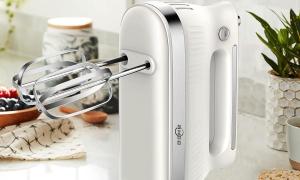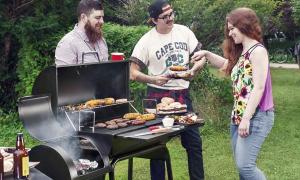Editor’s note: The following video is from Skinny Mom Contributor Rebekah Borucki at BEXLIFE®. Rebekah “Bex” Borucki, founder of BEXLIFE® and the BLISSED IN® wellness movement, is a mother-of-five, TV host, meditation guide, fitness and yoga instructor, birth doula, Hay House author, and popular YouTuber. She lives with her husband, kids, and their gaggle of misfit barnyard animals on their farm in Central Jersey.
Videos by PopCulture.com
Eating your placenta may seem like a weird notion to you, but mothers around the world have been practicing placentophagia for hundreds of years. Traditional Chinese herbalists, the Malay community in Singapore, as well as the Maoris in New Zealand all believe in the healing properties of the placenta and have different ceremonies honoring it. It’s recently come to the media’s attention through celebrities like January Jones and Alicia Silverstone deciding to partake in this growing trend.
>> Read more: Prenatal Vitamins and Supplements You Need When Pregnant

The placenta is an organ that is attached to the lining of your womb during pregnancy. It helps to keep your blood supply separate from your baby’s blood supply. It also provides a link between you and your baby, so you can send them nutrients, hormones to help them grow and antibodies. The reason that the placenta is eaten after childbirth is because it contains oxytocin and about a half dozen other hormones and natural substances to help your body recover. Oxytocin helps to reduce pain, promotes lactation and can increase bonding with your baby.
>> Read more: Sex After Baby: What They Didn’t Tell You
After giving birth, your doctor can set aside your placenta and save it for you. Be sure that you’ve talked to your doctor about this prior or it will get discarded. You can ask a doula or a midwife to take the placenta and turn it into capsule or drop form. In pill form, the placenta specialist will steam, dehydrate and then ground your placenta into 35 to 70 capsules. To make drops, the doula or midwife will distill the placenta in an alcohol-based solution for you to use. Some new mothers even ask for a silver dollar-sized placenta piece to eat right after birth!
There have been cases when a placenta cannot be used at all. If it has been touched by meconium — baby’s first poop — or has chorioamnionitis, a bacterial infection. You also can’t eat someone else’s placenta because it contains your own blood and that can be dangerous.
>> Read more: 6 Things You Should Know About The First 6 Months of Having A Baby
The recommended placenta dosage is one pill in the morning and one pill at night. It can greatly help new moms regain energy, reduce bleeding, boost immunity, increase milk production and fight off postpartum depression. If you take too many pills you feel hyperstimulated. Watch out for symptoms like feeling nervous and being unable to sleep. You might want to decrease your dosage or stop taking the pills altogether. Eating your placenta is not for everyone.
Sources: U.S. News and The Feminist Breeder





